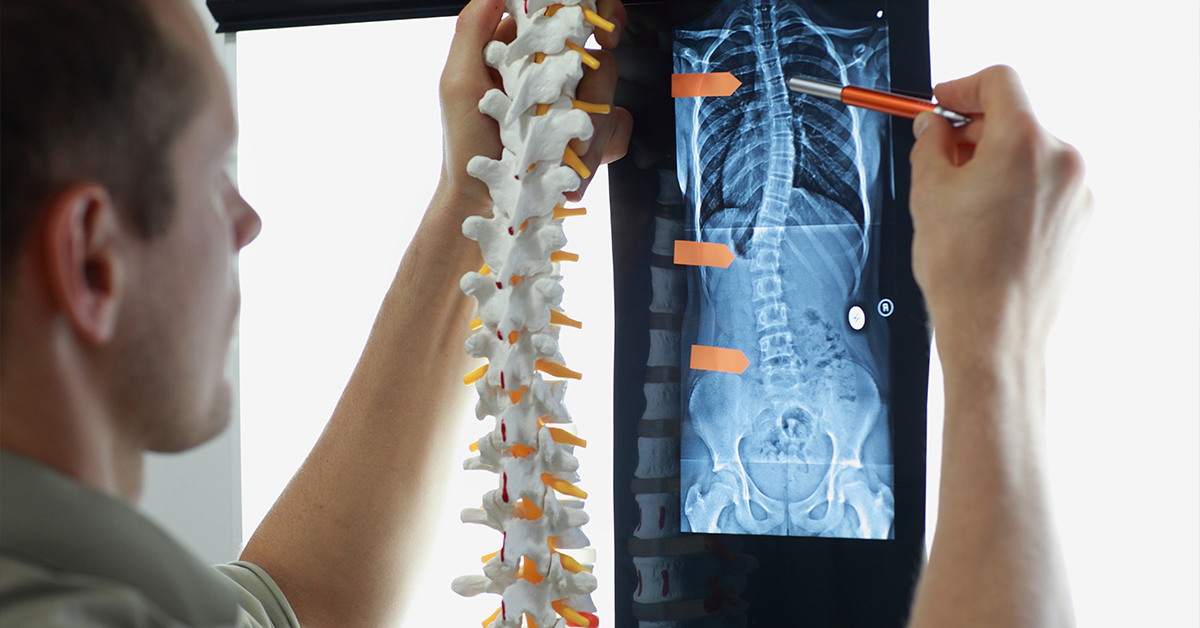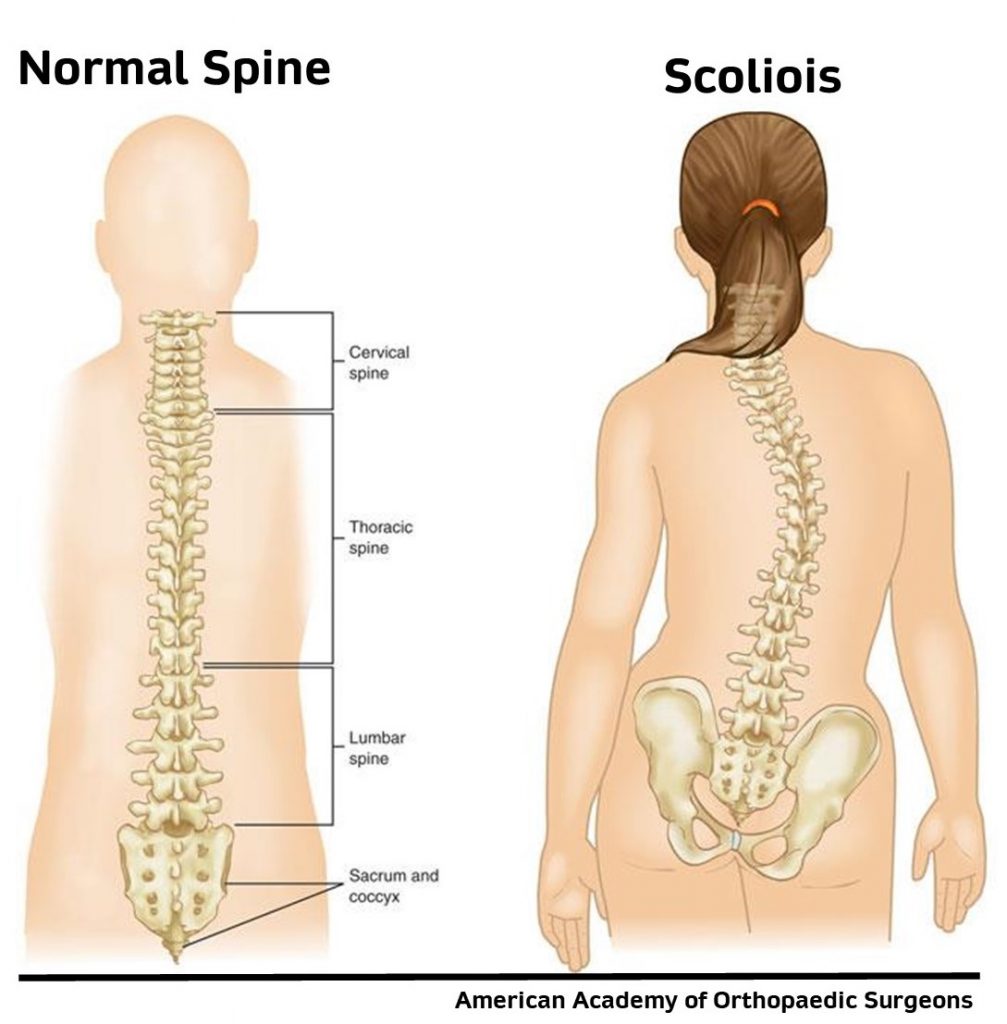

A healthy spine has three natural curves: an inward curve at the neck (cervical curve), an outward curve at the middle of the back (thoracic curve) and an inward curve at the lower back (lumbar curve). An abnormal sideways curve of the spine is a condition called scoliosis.
June is National Scoliosis Awareness Month. Let’s use this time to learn more about this common spinal disorder.
Scoliosis affects approximately 2 to 3 percent of Americans, or an estimated 6 to 9 million people. Nearly 3 million new cases of scoliosis are diagnosed in the US each year. Anyone can get scoliosis, but the most common type, adolescent idiopathic scoliosis (AIS), affects children between the ages of 10 and 18. AIS is found in as many as four in 100 adolescents. However, scoliosis can affect adults as well.
Idiopathic means there is no identifiable cause. However, there appears to be hereditary factors involved because the disorder sometimes runs in families. Less common types of scoliosis may be caused by certain neuromuscular conditions, such as cerebral palsy or muscular dystrophy; birth defects; injuries or infections of the spine; and spinal abnormalities.
Most cases of scoliosis begin when children are between 10 and 15 years old, during the adolescent growth spurt. At this point, the condition occurs equally between males and females. However, the curves in females are eight times more likely to progress to a degree large enough to require treatment.
There are several signs that may suggest a person has scoliosis:
• Shoulders are uneven. One shoulder blade may appear more prominent than the other.
• The head is not centered directly above the pelvis.
• The waist is uneven.
• One hip is higher than the other.
• One side of the ribcage juts forward.
• A prominence is present on one side of the back when bending forward.
• The entire body leans to one side.
If your child exhibits any of these signs, visit your pediatrician for an evaluation. The doctor will carefully review your child’s medical history and will ask about his or her growth. As part of the physical exam, the doctor may perform an Adam’s forward bend test. The doctor will have your child stand with his or her feet together and bend 90 degrees at the waist. In this position, a protruding ribcage and any abnormal spinal curves are easily detected.

The doctor will use imaging scans such as x-ray, CT and MRI to assess the shape, direction, location and angle of the spinal curve.
A diagnosis of scoliosis is made when the Cobb angle, a measurement of the sideways curvature of the spine, is at least 10 degrees. A curve is considered significant if it is greater than 25 to 30 degrees.
Most cases of AIS are mild, and treatment involves monitoring your child regularly for progression of the curve. Bracing may be recommended if your child’s spinal curve measures 25 to 40 degrees. If the curve is greater than this, the doctor may recommend surgery.
Braces are most effective when worn before your child’s bones stop growing. Large studies have shown that braces, when used properly, successfully halt curve progression in about 80 percent of children with scoliosis. For best results, braces must be worn 16 to 23 hours every day until bone growth stops. Today’s modern braces fit neatly around the body and are not visible under clothing.
The standard surgery for severe scoliosis is spinal fusion. During this procedure, the surgeon fuses two or more bones in the spine (vertebrae) together so they no longer move independently. The doctor places pieces of bone or a bone-like material between the vertebrae to help them fuse. The surgeon inserts metal rods and screws to hold the spine straight while fusion takes place. The rods can be adjusted in children as they grow.
The outlook for people with scoliosis depends on the severity of the curvature. In cases where the curve is mild to moderate, the condition is unlikely to interfere with functioning and everyday activities. People with severe curves, however, may experience some physical limitations.
If you or your child have difficulty living with scoliosis, consider joining a support group. The National Scoliosis Foundation (scoliosis.org), is a good place to look for helpful resources.




Leave a Reply